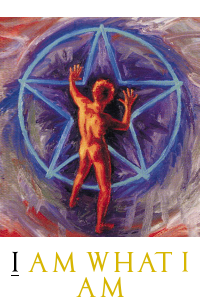Not much commentary from me, but I really think that this article by Heather MacDonald deserves a lot of attention.
Some choice quotes [emphasis mine]:
It’s a lonely job, working the phones at a college rape crisis center. Day after day, you wait for the casualties to show up from the alleged campus rape epidemic—but no one calls. Could this mean that the crisis is overblown? No: it means, according to the campus sexual-assault industry, that the abuse of coeds is worse than anyone had ever imagined. It means that consultants and counselors need more funding to persuade student rape victims to break the silence of their suffering.
None of this crisis response occurs, of course—because the crisis doesn’t exist. During the 1980s, feminist researchers committed to the rape-culture theory had discovered that asking women directly if they had been raped yielded disappointing results—very few women said that they had been. So Ms. commissioned University of Arizona public health professor Mary Koss to develop a different way of measuring the prevalence of rape. Rather than asking female students about rape per se, Koss asked them if they had experienced actions that she then classified as rape. Koss’s method produced the 25 percent rate, which Ms. then published.
Koss’s study had serious flaws. Her survey instrument was highly ambiguous, as University of California at Berkeley social-welfare professor Neil Gilbert has pointed out. But the most powerful refutation of Koss’s research came from her own subjects: 73 percent of the women whom she characterized as rape victims said that they hadn’t been raped. Further—though it is inconceivable that a raped woman would voluntarily have sex again with the fiend who attacked her—42 percent of Koss’s supposed victims had intercourse again with their alleged assailants.
Just as a reality check, consider an actual student-related rape: in 2006, Labrente Robinson and Jacoby Robinson broke into the Philadelphia home of a Temple University student and a Temple graduate, and anally, vaginally, and orally penetrated the women, including with a gun. The chance that the victims would not consider this event “serious enough to report,” or physically and emotionally injurious, is exactly nil. In short, believing in the campus rape epidemic depends on ignoring women’s own interpretations of their experiences—supposedly the most grievous sin in the feminist political code.
None of the obvious weaknesses in the research has had the slightest drag on the campus rape movement, because the movement is political, not empirical. In a rape culture, which “condones physical and emotional terrorism against women as a norm,” sexual assault will wind up underreported, argued the director of Yale’s Sexual Harassment and Assault Resources and Education Center in a March 2007 newsletter. You don’t need evidence for the rape culture; you simply know that it exists. But if you do need evidence, the underreporting of rape is the best proof there is.
Federal law requires colleges to publish reported crimes affecting their students. The numbers of reported sexual assaults—the law does not require their confirmation—usually run under half a dozen a year on private campuses and maybe two to three times that at large public universities. You might think that having so few reports of sexual assault a year would be a point of pride; in fact, it’s a source of gall for students and administrators alike.
Campuses do everything they can to get their numbers of reported and adjudicated sexual assaults up—adding new categories of lesser offenses, lowering the burden of proof, and devising hearing procedures that will elicit more assault charges. At Yale, it is the accuser who decides whether the accused may confront her—a sacrifice of one of the great Anglo-Saxon truth-finding procedures. “You don’t want them to not come to the board and report, do you?” asks physics professor Peter Parker, convener of the university’s Sexual Harassment Grievance Board.
The scarcity of reported sexual assaults means that the women who do report them must be treated like rare treasures. New York University’s Wellness Exchange counsels people to “believe unconditionally” in sexual-assault charges because “only 2 percent of reported rapes are false reports” (a ubiquitous claim that dates from radical feminist Susan Brownmiller’s 1975 tract Against Our Will). As Stuart Taylor and K. C. Johnson point out in their book Until Proven Innocent, however, the rate of false reports is at least 9 percent and probably closer to 50 percent. Just how powerful is the “believe unconditionally” credo? David Lisak, a University of Massachusetts psychology professor who lectures constantly on the antirape college circuit, acknowledged to a hall of Rutgers students this November that the “Duke case,” in which a black stripper falsely accused three white Duke lacrosse players of rape in 2006, “has raised the issue of false allegations.” But Lisak didn’t want to talk about the Duke case, he said. “I don’t know what happened at Duke. No one knows.” Actually, we do know what happened at Duke: the prosecutor ignored clearly exculpatory evidence and alibis that cleared the defendants, and was later disbarred for his misconduct. But to the campus rape industry, a lying plaintiff remains a victim of the patriarchy, and the accused remain forever under suspicion.
But the post-1960s university is nothing if not capacious. It has institutionalized every strand of adolescent-inspired rebellion familiar since student sit-in days. The campus rape industry may decry ubiquitous male predation, but a campus sex industry puts bureaucratic clout behind the message that students should have recreational sex at every opportunity.
In October 2005, at a Delta Delta Delta formal, drunken sorority girls careened through the host’s house, vomiting, falling, and breaking furnishings. One girl ran naked through a hallway; another was found half-naked with a male on the bed in the master suite. A third had intercourse with her escort in a different bedroom. On the bus back from the formal, she was seen kissing her escort; once she arrived home, she had sex with a different male. Later, she accused her escort of rape. The district attorney declined to prosecute the girl’s rape charges. William and Mary, however, had already forced the defendant to leave school and, even after the D.A.’s decision, wouldn’t let him return until his accuser graduated. The defendant sued his accuser for $5.5 million for defamation; the parties settled out of court.
The incident wasn’t as unusual as it sounds. A year earlier, a William and Mary student had charged rape after having provided a condom to her partner for intercourse. The boy had cofounded the national antirape organization One in Four; the school suspended him for a year, anyway. In an earlier incident, a drunken sorority girl was filmed giving oral sex to seven men. She cried rape when her boyfriend found out. William and Mary found one of the recipients, who had taped the event, guilty of assault and suspended him.
But in the fall semester of 2005, rape charges spread through William and Mary like witchcraft accusations in a medieval village. In short succession after the Delta Delta Delta bacchanal, three more students accused acquaintances of rape. Only one of these three additional victims pressed charges in court, however, and she quickly dropped the case.
A fifth rape incident around the same time followed a different pattern. In November 2005, a William and Mary student woke up in the middle of the night with a knife at her throat. A 23-year-old stranger with a prior conviction for peeping at her apartment complex had broken into her apartment; he raped her, threatened her roommate at knifepoint, and left with two stolen cell phones and cash. The rapist was caught, convicted, and sentenced to 57 years in prison.
Guess which incident got the most attention at William and Mary? The Delta Delta Delta formal “rape.” Like many stranger rapists on campus, the knifepoint assailant was black, and thus an unattractive target for politically correct protest. (The 2006 Duke stripper case, by contrast, seemingly provided the ideal and, for the industry, sadly rare configuration: white rapists and a black victim.)
Modern feminists defined the right to be promiscuous as a cornerstone of female equality. Understandably, they now hesitate to acknowledge that sex is a more complicated force than was foreseen. Rather than recognizing that no-consequences sex may be a contradiction in terms, however, the campus rape industry claims that what it calls campus rape is about not sex but rather politics—the male desire to subordinate women. The University of Virginia Women’s Center intones that “rape or sexual assault is not an act of sex or lust—it’s about aggression, power, and humiliation, using sex as the weapon. The rapist’s goal is domination.”
This characterization may or may not describe the psychopathic violence of stranger rape. But it is an absurd description of the barnyard rutting that undergraduate men, happily released from older constraints, seek. The guys who push themselves on women at keggers are after one thing only, and it’s not a reinstatement of the patriarchy. Each would be perfectly content if his partner for the evening becomes president of the United States one day, so long as she lets him take off her panties tonight.
“Promiscuity” is a word that you will never see in the pages of a campus rape center publication; it is equally repugnant to the sexual liberationist strand of feminism and to the Catherine Mac-Kinnonite “all-sex-is-rape” strand. But it’s an idea that won’t go away among the student Lumpenproletariat. Students refer to “sororistutes”—those wild and crazy Greek women so often featured in Girls Gone Wild videos. And they persist in seeing a connection between promiscuity and the alleged campus rape epidemic. A Rutgers University freshman says that he knows women who claim to have been sexually assaulted, but adds: “They don’t have the best reputation. Sometimes it’s hard to believe that kind of stuff.”
Rape consultant David Lisak faced a similar problem this November: an auditorium of Rutgers students who kept treating women as moral agents. He might have sensed the trouble ahead when in response to a photo array of what Lisak calls “undetected rapists,” a girl asked: “Why are there only white men? Am I blind?” It went downhill from there. Lisak did his best to send a tremor of fear through the audience with the news that “rape happens with terrifying frequency. I’m not talking of someone who comes onto campus but students, Rutgers students, who prowl for victims in bars, parties, wherever alcohol is being consumed.” He then played a dramatized interview with a student “rapist” at a fraternity that had deliberately set aside a room for raping girls during parties, according to Lisak. The students weren’t buying it. “I don’t understand why these parties don’t become infamous among girls,” wondered one. Another asked: “Are you saying that the frat brothers decided that this room would be used for committing sexual assault, or was it just: ‘Maybe I’ll get lucky, and if I do, I’ll go there’?” And then someone asked the most dangerous question of all: “Shouldn’t the victim have had a little bit of education beforehand? We all know the dangers of parties. The victim had miscalculations on her part; alcohol can lead to things.”
As long and numerous as these quotes are, there’s way much more in the article. It’s long, but I can’t recommend it highly enough.
Is the mainstream finally starting to notice that something’s gone terribly wrong?








But the issue is, however low rape statistics actually are, the feminist agenda isn’t to claim that more women are violently penetrated against their will (which is easily disproven). The agenda is to claim that any form of sex that makes any woman feel uncomfortable (even if the woman who feels uncomfortable wasn’t involved in the sex!) is sexual assault. That if a woman regrets sex, or her friend is angry at her for “stealing” a man, or a feminist feels grossed out by spanking, or enough women get STDs off the same guy, that the courts can consider all consent tantamount to Stockholm Syndrome and reclassify the sex, post-act, as rape or sexual assault. It’s basically taking all sexual power out of the hands of men and giving it to women, only to take all women’s power away from women and give it to academic Marxists. Maybe the day will come when you legally CAN’T consent to casual sex, bondage, fetishes, adulterous sex, sex in exchange for something, roleplay, etc. Where only PIV sex in a limited range of positions, without any props, in a specific type of relationship is legal and all else you risk being jailed for.
I agree. Furthermore, just like workplace sexual harassment rules only apply to unattractive guys (nobody’s going to report the dude with sexy blue eyes that every woman’s dreaming about), these rules will likewise disproportionately affect shy or unattractive guys. If she’s really into the guy she won’t report him. (the exceptions being if he banged her but didn’t call or something).
Nevertheless, Alpha Stud will still be doing all sorts of women every which way as normal guys gets further alienated.
When it’s the sexee filing the harassment claim that will hold true, as regret is the most common reason for post-sex withdrawal of consent. But if we reach such a day as when the unsexed or bystanders can file claims on behalf of the sexees, we may start to see another branch of “victimless crimes” emerging for the State’s profit. Let’s hope the MSM continues to shed light on reason and we never get so far. Everyone knows at least one or two people who would accuse them or their partner of sexually assaulting each other, be it for the accuser’s personal gain or epicaricatic pleasure.
What you’re doing is rape of the Rape-rape cultural narrative.
Rape-rape cultural narrative rape!
They are over-using the word just a bit, aren’t they? Lying to get sex is rape. “Eye rape.”
If checking a girl out too much is “rape,” what the hell are we going to use to destroy what occupying hoards do to poor peasant girls?
-“You don’t need evidence for the rape culture; you simply know that it exists. But if you do need evidence, the underreporting of rape is the best proof there is.”- This is like saying you don’t need evidence to prove unicorns exist. The fact that nobody has seen and reported a unicorn is the best proof there is.
“The fact that nobody has seen and reported a unicorn is the best proof there is.”
Not necessarily, but it IS proof that unicorns have such strong magical powers that everybody who sees them is in such awe that it would never occur to them to tell anybody about it.
Or, “you don’t need evidence to prove unicorns exist. You simply know they do. But If you do need it, the under-reporting of unicorns(sightings, meetings, etc) is the best proof there is.” You can substitute the word unicorn with stuff like: pink elephants, misandry, or killer farts.
Pingback: Lightning Round – 2014/12/17 | Free Northerner
Great article. False rape claims are relatively small in numbers and rapes thats nevers is reported is a much bigger problem.
Hope your book project’s going well, Martel, and hope to see you blogging again soon. You’ve been missed.
Reblogged this on ElderofZyklon's Blog!.
I know it has been a while. I hope the book is going well. I wish you were still blogging. As Rollo shows, the 2 can be complementary. If you’re stuck or slowed down somewhere, this can be a good place to throw out a few different ideas and have them thrashed out.
A year earlier, a William and Mary student had charged rape after having provided a condom to her partner for intercourse. The boy had cofounded the national antirape organization One in Four; the school suspended him for a year, anyway.
i feel bad that this happened to him, but i also feel shadenfreude that a male feminist got a taste of his own medicine.